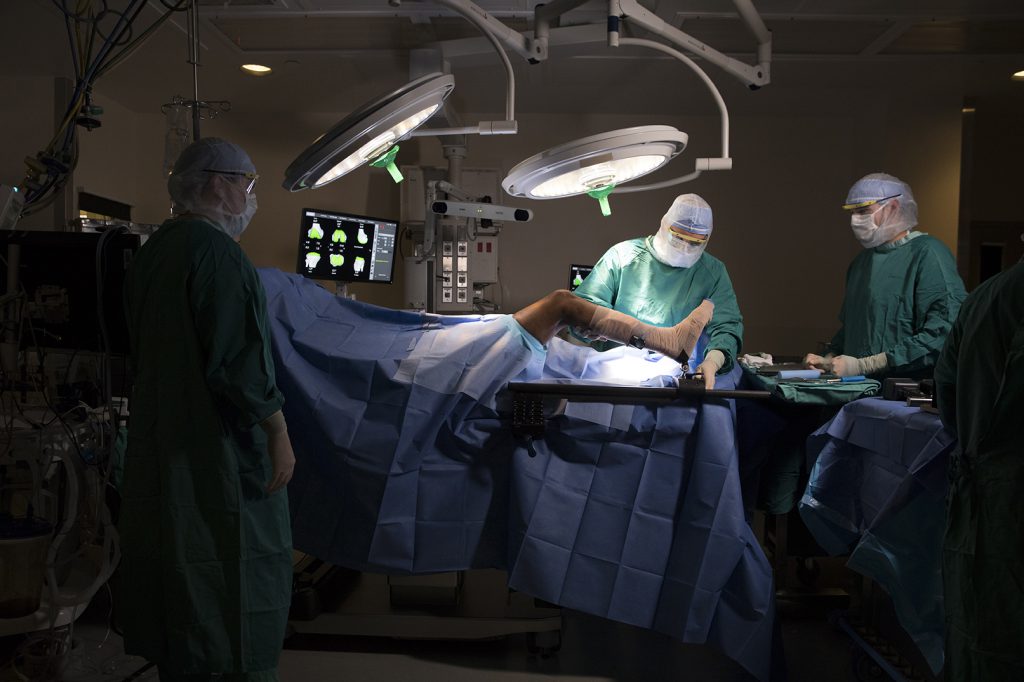Arthroscopic surgery is a term used to describe a surgery which uses small incisions to insert tools and a camera (scope) to look inside a joint to diagnose or treat a problem.
The scope is like a miniature television camera. The images are sent to a large screen in front of the doctor so they can see the inside of the joint without making a large incision. The doctor can see the cartilage, ligaments and bones of the joint to determine the extent of the injury. They then repair or correct the problem through additional small incisions using pencil-sized instruments or tools, while using the camera to guide the surgery.
Dr. Adam V. Metzler, Orthopaedic Surgeon with OrthoCincy Orthopaedic and Sports Medicine who practices at St. Elizabeth Healthcare, specializing in arthroscopic, or minimally invasive reconstructive procedures, for the knee and shoulder, and trauma fractures.
“Arthroscopic surgery is used to diagnose and treat injuries of our major joints. I specialize in knee and shoulder injuries, but it is also used on elbows, hands and ankles,” says Dr. Metzler. “Typically, the types of injuries we are treating are from activity or wear and tear injuries as well as trauma injuries.”
Types of injuries usually treated by arthroscopic surgery include:
- Ligament injuries of the knee –such as anterior cruciate ligament (ACL), posterior cruciate ligament (PCL)
- Cartilage injuries – such as meniscus tear or repair of the knee and labral tear of the shoulder.
- Tendon injuries – such as rotator cuff tears of the shoulder, acromioclavicular arthritis and shoulder impingement.
- Arthritis – Debridement of the joint for osteoarthritis and smoothing joint surfaces.
Benefits of Arthroscopic Surgery
“Arthroscopic surgery has many benefits compared to an open surgery,” said Dr. Metzler. “Not only is it typically an outpatient procedure, but it also involves less cutting, less risk and a much faster recovery.”
The top 3 benefits of arthroscopic surgery are:
- Minimally invasive procedure – using this technique there is less cutting and scaring to the patient which means less pain after surgery.
- Shorter recovery time – these procedures are typically outpatient procedures so patients go home the same day. They also can return to their previous level of function much sooner.
- Less surgical risk – this technique offers less surgical risk to the patient such as lower risk of infection.
For more information or to schedule an appointment, call our affiliated orthopaedic surgeons at OrthoCincy Orthopaedic and Sports Medicine at 859-301-BONE (2663).

